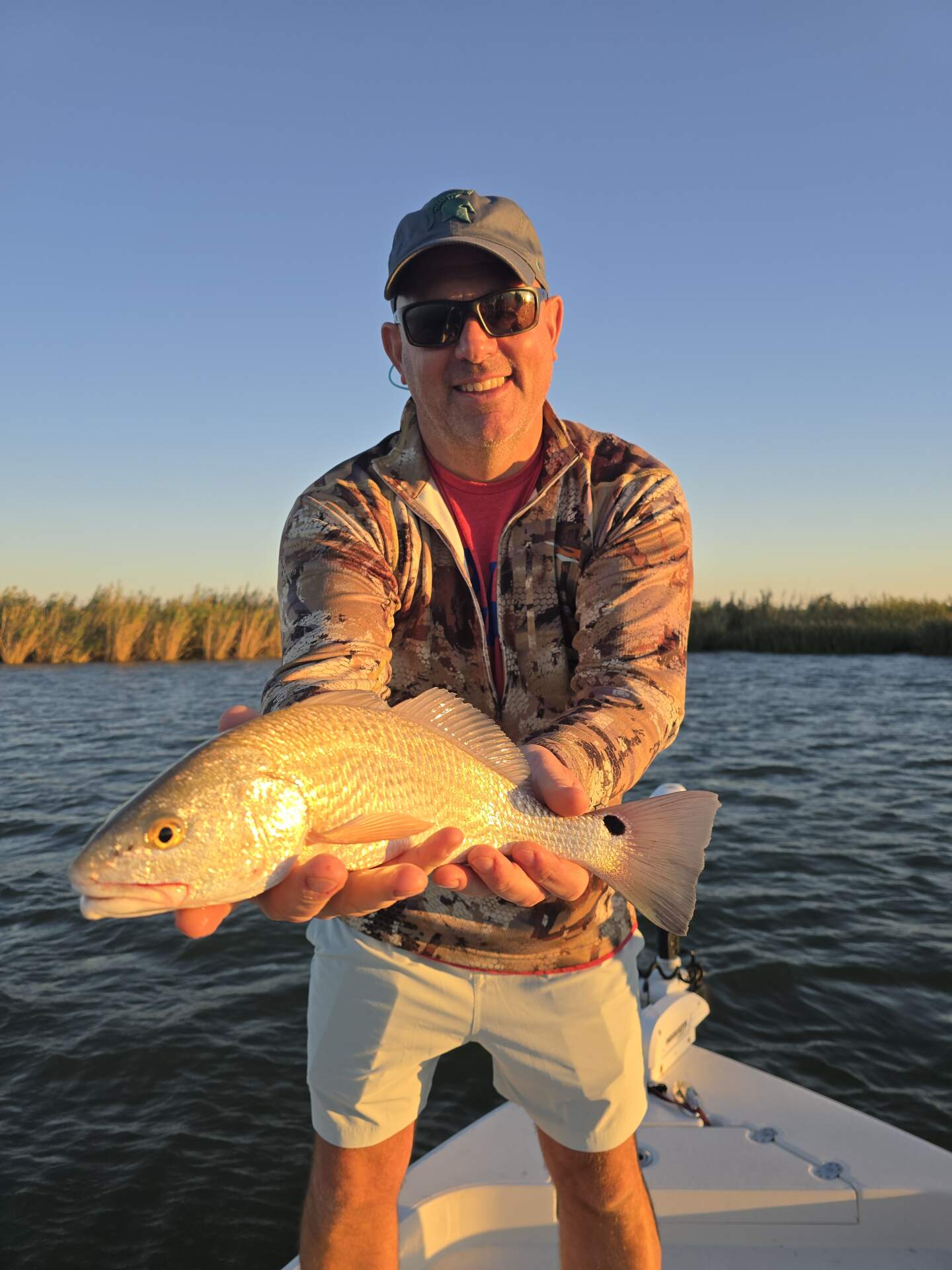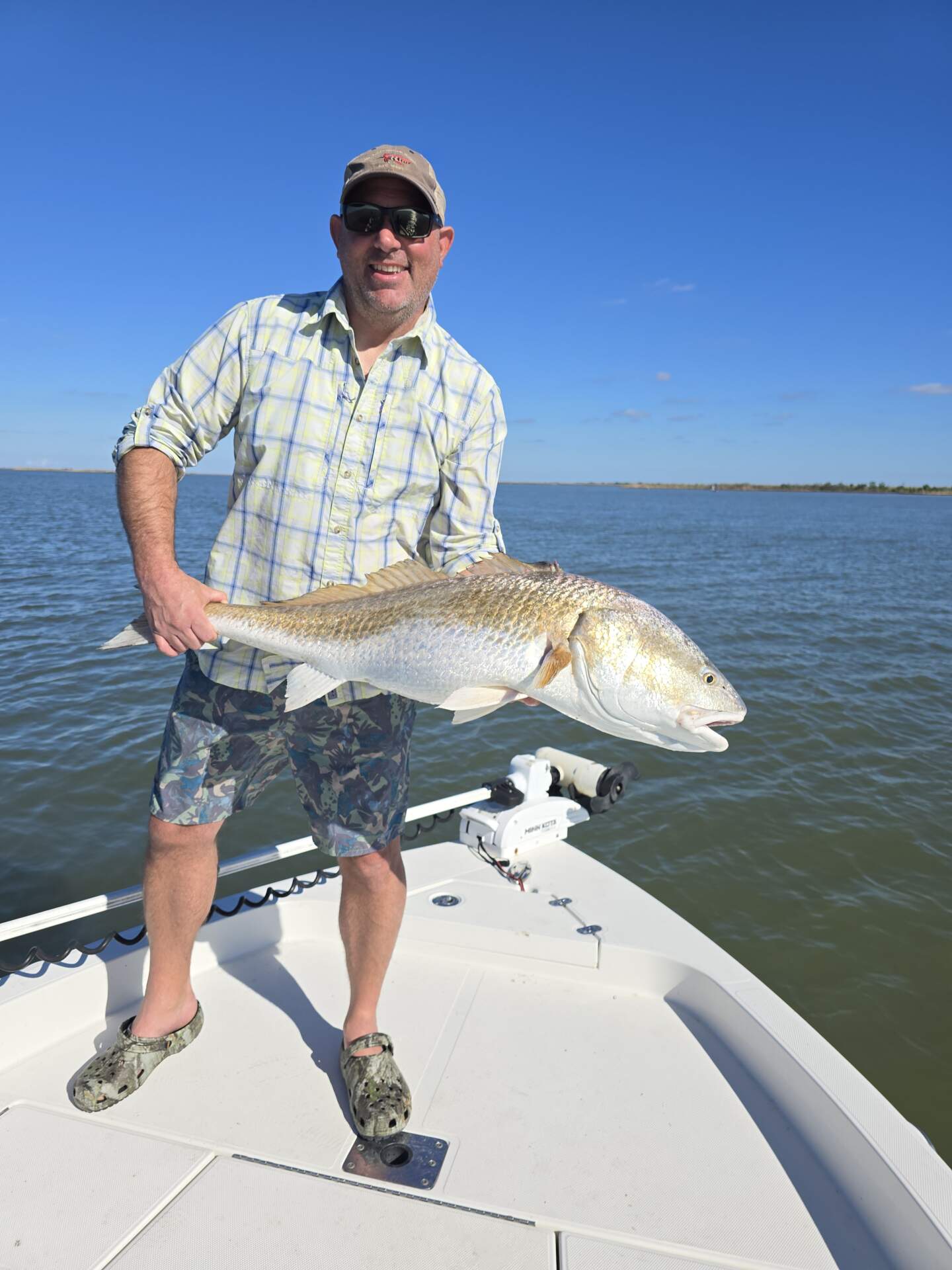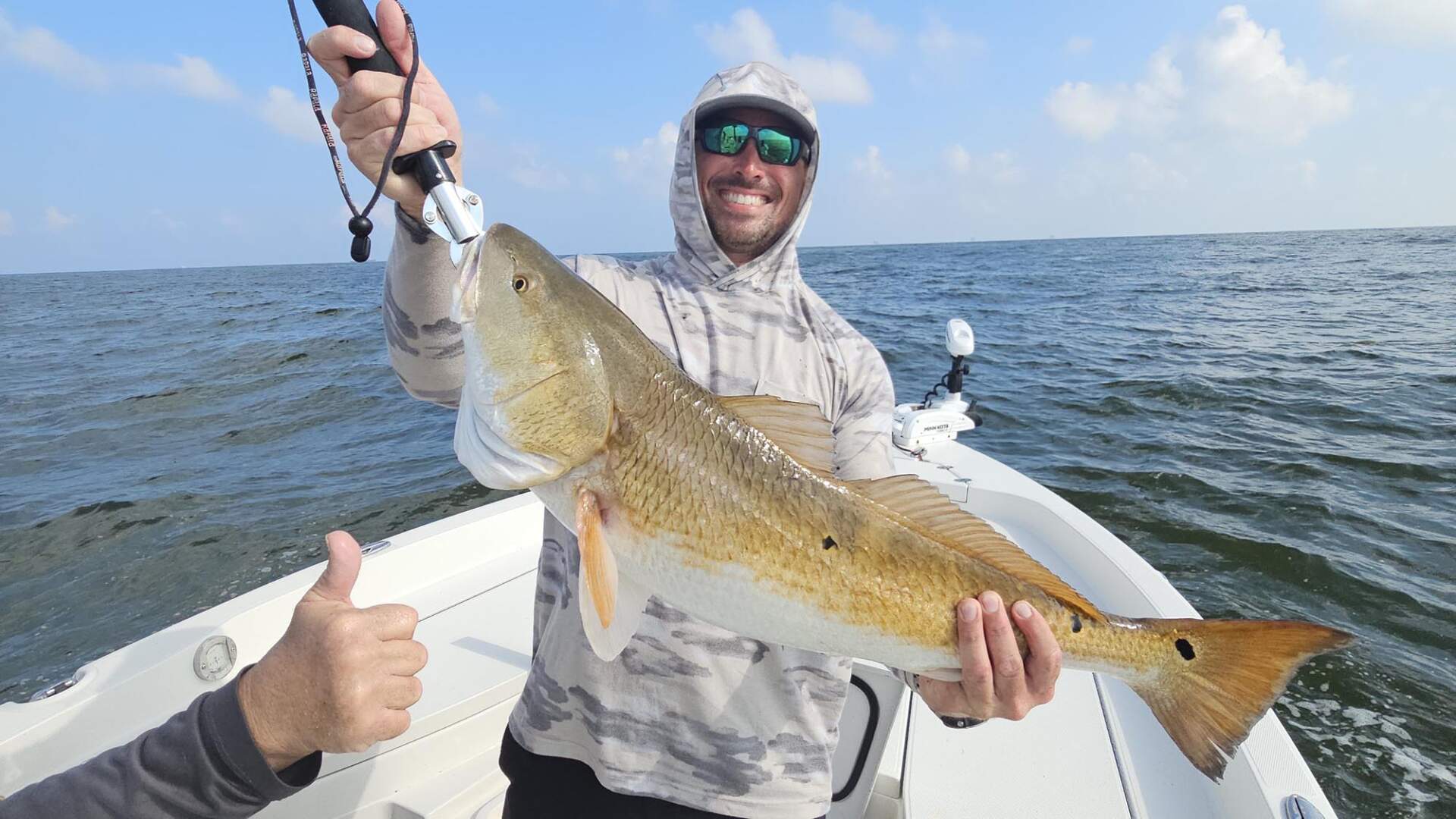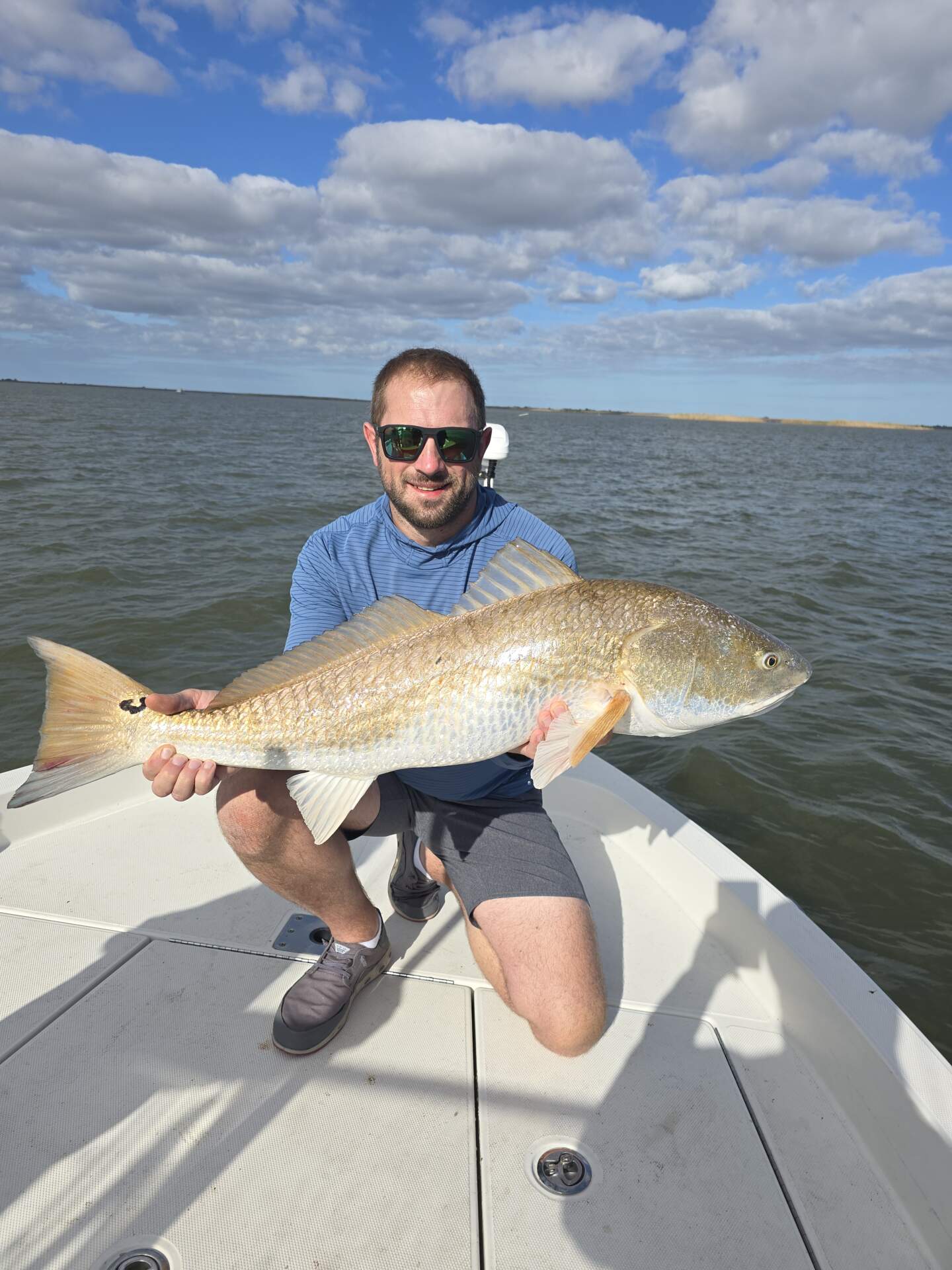A Complete Approach to Catching Redfish in Inshore and Nearshore Waters
Redfish, also known locally as red drum or simply “reds,” are a reliable and rewarding catch throughout Louisiana’s coastal waters. During the spring season, redfish activity increases significantly, making this one of the best times of year for fishermen targeting both inshore marshes and nearshore structures. This guide provides a detailed look at redfish behavior, spring migration patterns, productive fishing areas, recommended tackle, bait options, and proven techniques for success along the Louisiana coast.
Detailed Species Description: Redfish
Redfish (Sciaenops ocellatus) are strong, bottom-oriented fish that thrive in the brackish and coastal waters of Louisiana. They are easily recognized by their reddish-bronze coloring, thick bodies, and the presence of a distinct black spot—or several—near the base of the tail. The coloration can vary slightly depending on water clarity and habitat, with fish caught offshore often appearing more silvery than those in muddy marsh environments.
Redfish have powerful tails and thick shoulders that give them the strength to pull hard, especially in shallow water. Their broad diet includes shrimp, mullet, menhaden, blue crabs, and a range of smaller finfish. They are opportunistic feeders and respond well to both live and artificial bait presentations.

Seasonal Patterns on the Louisiana Coast
Redfish are present year-round across Louisiana’s estuarine systems, but spring offers a unique combination of warming water temperatures, increased bait activity, and stable conditions that make them easier to locate and catch. From late March through May, redfish begin moving more actively through marsh drains, cuts, and bayou intersections, feeding heavily as shrimp and finfish return to shallow waters.
Water temperatures between 65°F and 75°F typically mark the most productive periods. Spring tides also help by pulling bait out of marsh systems into accessible channels and shorelines. During this season, fishermen regularly encounter redfish in both shallow inshore marshes and in deeper nearshore waters, depending on local conditions and water clarity.
Locating Redfish in Spring
Redfish are structure-oriented and tend to hold near current breaks, shallow flats, and transition zones between deeper water and shoreline cover. In spring, productive areas include:
Marsh Edges and Interior Ponds
Inshore marsh systems are often most productive on a rising or falling tide. Redfish cruise along grass lines and shallow pond edges looking for shrimp, crabs, and small fish. Areas with clean water and visible bait activity are typically best.
Shell Banks and Shoreline Points
Oyster reefs and submerged shell beds hold bait and attract redfish throughout spring. Shoreline points that extend into open bays or cut through marsh systems create natural ambush spots during moving tides.
Tidal Passes and Bayou Mouths
Where marsh drains meet open water, redfish often gather to intercept bait pushed by tidal flow. These locations are especially good on outgoing tides when bait is flushed into more open water.
Nearshore Reefs and Current Lines
Some redfish, particularly larger individuals, hold just offshore near man-made reefs, rock piles, or sandy breaks. These areas offer access to cleaner water and schools of baitfish such as menhaden and mullet.
Surface activity like nervous bait, small wakes, or pushes near grass lines are reliable visual cues in calmer conditions. In off-colored water, rely more on tidal flow, structure, and bait presence to guide your choice of location.

Recommended Gear and Tackle Setup
Redfish are aggressive and strong, but they don’t require overly heavy tackle. A balanced setup that allows accurate casting and enough backbone for control is ideal.
Rods and Reels
-
Rods: Medium or medium-heavy action rods in the 7 to 7½ foot range are preferred. These allow for longer casts and better hook-setting power, especially in windy spring conditions.
-
Reels: Spinning reels in the 3000–4000 size range are effective for most inshore and nearshore redfish. Models with a smooth, sealed drag are beneficial when targeting larger fish near shell or structure.
Line and Leaders
-
Main Line: 15–30 lb braided line is recommended for its sensitivity and castability. In more open water, some fishermen still prefer 12–20 lb monofilament for its shock absorption.
-
Leader: A 20–30 lb fluorocarbon leader is typically enough. In areas with heavy shell or structure, some increase to 40 lb test. Leaders should be 18 to 24 inches in length, depending on water clarity.
Best Baits and Lures for Redfish
Spring redfish respond well to both natural and artificial presentations. Matching local forage and adjusting based on water clarity and current speed can make a significant difference.
Live and Natural Baits
-
Live Shrimp: Fished under a popping cork or free-lined in current, live shrimp are a consistent producer in spring.
-
Mullet and Menhaden: Cut or live, these baits appeal to redfish feeding around drains and flats.
-
Blue Crab: Halved crab or smaller whole crabs are especially productive near oyster beds and deeper cuts.
Artificial Lures
-
Paddle Tail Soft Plastics: Rigged on a ⅛ to ¼ oz jighead, these mimic small baitfish and can be worked across flats or along drop-offs.
-
Gold Spoons: A classic for redfish, especially in stained water. Their flash and vibration make them ideal for covering water efficiently.
-
Topwater Plugs: Early mornings or calm, overcast days offer chances to draw surface strikes. Walk-the-dog-style lures are especially effective in shallower water.
-
Spinnerbaits: In grassy or off-colored water, spinnerbaits allow fishermen to move slowly while producing flash and vibration.
Techniques for Catching Redfish
Sight Fishing
In shallow ponds and clear marsh edges, sight fishing offers the most direct and visual approach. Fishermen should move quietly and look for moving water, tailing fish, or mud boils before casting ahead of the fish’s direction.
Popping Cork Fishing
A popping cork rig suspends live or artificial bait just above the bottom. Used in areas with submerged vegetation, shell, or heavy current, this technique is especially effective on moving tides and when targeting slot reds in 2 to 4 feet of water.
Free-Lining and Bottom Fishing
Cut bait or live bait can be free-lined in current or placed on a fish-finder rig near structure. This technique works well when fishing channels, oyster reefs, or deeper cuts where redfish may be staging.
Drifting and Casting
Over open flats or shorelines, drifting with the wind and fan-casting soft plastics or spoons allows fishermen to locate scattered redfish. Once fish are found, anchoring and working the area thoroughly can produce multiple hook-ups.
Handling and Landing Redfish
Redfish are powerful and will make hard, sustained runs. When landing:
-
Use steady pressure to steer them away from structure.
-
Avoid high-sticking rods when lifting fish near the boat.
-
A large rubber landing net reduces stress and protects the fish’s slime coat if releasing.
-
Handle with wet hands and support the fish’s body weight, especially for larger individuals.
-
Place keepers on ice immediately to preserve quality.
Safety and Regulations
Louisiana fishing regulations for redfish include slot limits, possession limits, and gear restrictions. Regulations are subject to change, so confirm current rules before heading out.
-
Minimum size: 16 inches total length
-
Slot limit: 16–27 inches (only one fish over 27 inches allowed per person)
-
Bag limit: 5 redfish per person per day (subject to change by area or season)
Ensure that all fishing licenses are current and that safety gear complies with state requirements.

Spring Redfish Results Start with the Right Approach
Fishing for redfish along the Louisiana coast in spring gives fishermen dependable opportunities to target a hard-fighting species in both shallow marshes and nearshore structure. By learning how redfish respond to seasonal changes—particularly rising water temperatures, tidal flow, and bait migrations—you can better predict where to find them and how to present bait effectively.
Using the right gear, matching the forage, and adjusting techniques to local conditions are the core elements of a successful spring redfish trip. For fishermen ready to get on the water, book a guided trip with FishnLA. Our charters are tailored to redfish fishing in the Louisiana marsh and nearshore areas, and our experienced captains understand the seasonal shifts and productive patterns that make the difference.

